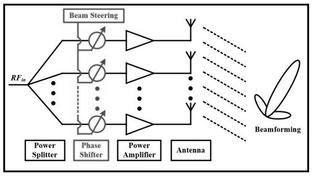Understanding Radar Speed Signs: How They Work
Advertisement
This article explains how radar speed signs function.
What are Radar Speed Signs?
Introduction:
- Radar speed signs, as the name implies, display the speed of vehicles passing nearby. They are also known as radar feedback signs, speed feedback signs, radar signs, and “Your Speed” signs.
- These signs are built using LEDs, radar hardware, and a battery, among other components.
- Their primary function is to alert drivers to slow down when their vehicle’s speed exceeds the posted speed limit.
- They serve as a traffic calming device, helping to prevent accidents by encouraging lower speeds more effectively than speed bumps or humps, thanks to their flashing LED display.
- They can be powered by battery packs, solar power, or AC power.
- Supporting Bluetooth and Wi-Fi, they can be controlled using mobile apps.

- Radar speed signs operate in the K band (18 to 27 GHz) and can detect vehicles up to approximately 1200 feet away.
- They have a detection range of about 5 to 127 MPH.
- They operate within a specific beamwidth (12° +/- 2°) and offer measurement accuracy of around +/-1 MPH, depending on the design.
How Radar Speed Signs Work

The operation is similar to that of standard radar systems. Radar transmits radio frequency waves at the speed of light (3 x 108 m/s) and receives the echo from a target at a certain distance. The time elapsed between transmission and reception of the echo determines the target’s distance. The frequency difference between the transmitted signal and the received echo signal determines the target’s speed (i.e., the speed of a moving vehicle).
- Radar speed signs use a radar transmitter and receiver along with an algorithm to determine the speed of vehicles within their range.
- When a vehicle approaches the radar sign, the echo signal has a shorter distance to travel, and the frequency increases.
- Conversely, when a vehicle moves away from the radar sign, the echo signal has a longer distance to travel, and the frequency decreases.
- The radar hardware (transmitter/receiver) installed on the sign uses the change in frequency between the transmitted and received signals to determine the speed of the moving vehicle.
Advertisement
 RF
RF


